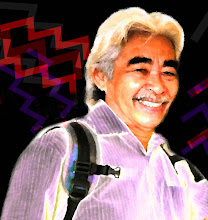 Meeting consumer needs at a profit. That's said and done. How? Your understanding of consumer needs is your competitive advantage. Your market need to be sliced into segments and you position your products or services to fit your target or niche markets. In doing this you need to project in the minds of the customers your core products benefits, both tangible and non-tangible.
Meeting consumer needs at a profit. That's said and done. How? Your understanding of consumer needs is your competitive advantage. Your market need to be sliced into segments and you position your products or services to fit your target or niche markets. In doing this you need to project in the minds of the customers your core products benefits, both tangible and non-tangible.Then you develop a marketing plan. Here you structure your strategy having put the customer at the center, you want to make repeat business by planning an integrated marketing communication mix ( 4 P's - Product, Price, Promotion, Place) . To be sure, your planning have to be in tandem with the industry's distribution structure, corporate objectives and your human, financial and physical resources. Finally all your marketing efforts must be justified and designed or re-designed to be competitive with the external non-controllable forces e.g governmental , legal, international laws, competitive economic conditions, natural resources, ethical, social and cultural operating milieu.
A well-thought out marketing plan creates excitement and value, always keeping in mind that there are no 'right' answers. Much of the positioning for instance is re-positioning to get a bigger share of the market. Before you get too high on the marketing plan think of the economics of the plan. What are the costs? How long can I get my investment back? Should I target at another segment?
Thus marketing is very important for business because it integrates all the functions of a business and speaks directly to the customer through advertising, sales people and other marketing activities. We need marketing sales to keep us employed in our organisations.


